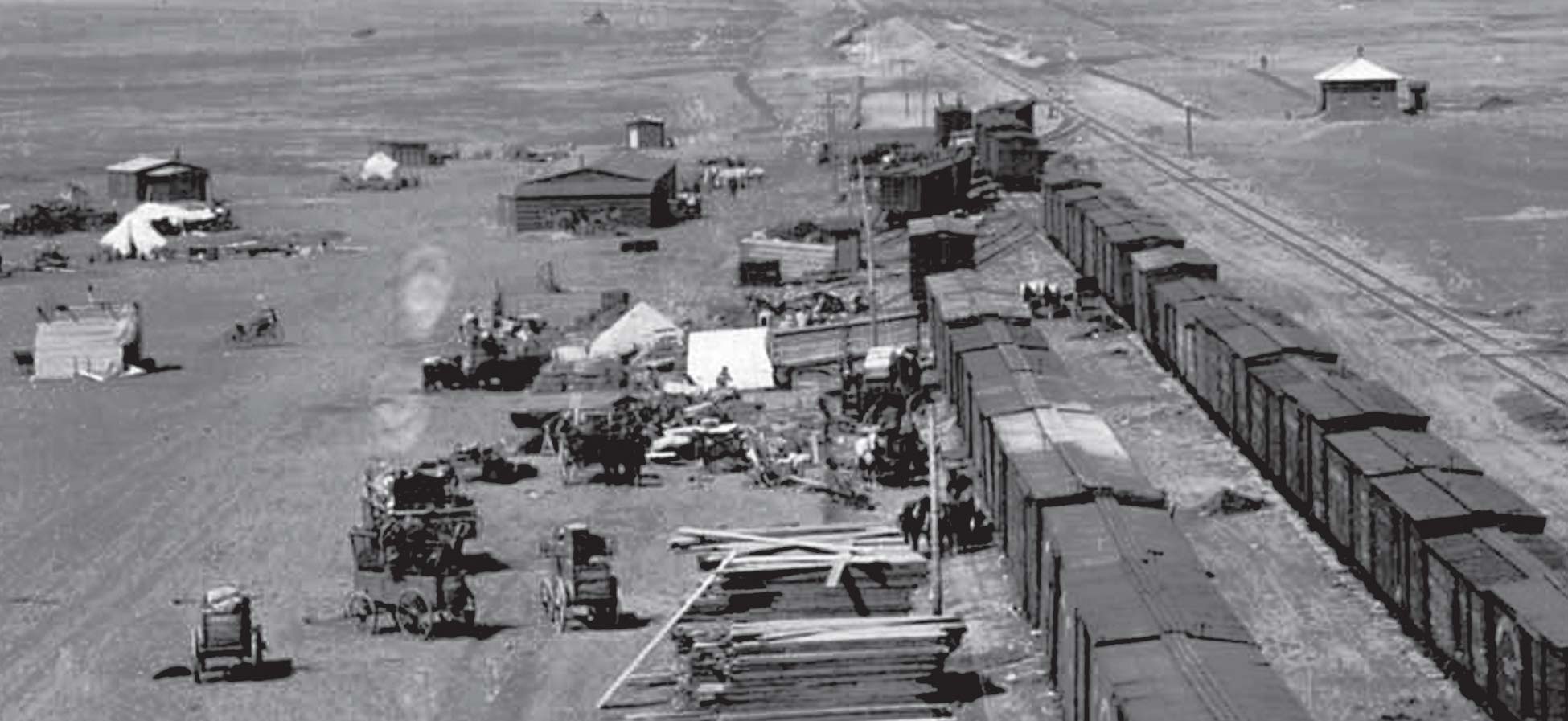American Indian tribes had been living in North Dakota for thousands of years before Euro-Americans arrived on the scene. The tribes had long ago established their own systems of government, economic systems, and ways of life. By the time the railroads arrived in northern Dakota, U.S. Army troops had forced the American Indian tribes to move from their homelands.
From the point of view of Euro-Americans, the settlement of North Dakota began in about 1870. For approximately the next 45 years, northern Dakota changed from what was considered an unknown frontier to a land of farms, ranches, and towns.
People heading for North Dakota used various means of travel to move themselves and their families to their destinations. Some of the people who came from other states or Canada loaded their possessions into wagons, which were pulled by oxen or horses, and followed overland trails. Steamboats or barges on both the Red and Missouri Rivers brought some of the settlers. The majority of pioneers, however, arrived by train.

Figure 68. Immigrant homesteaders arriving by train in Hettinger, North Dakota, 1908. (SHSND A1719-2)
European immigrants who had crossed the Atlantic Ocean by ship generally entered the United States through the busy port of Ellis Island in New York harbor. Railroad yards were located near the port, and the immigrants could board special trains that would transport them to western points. These trains were called immigrant trains.• Trains that carried immigrants from a port to western points
• Boxcars could be rented by families to transport their belongings


